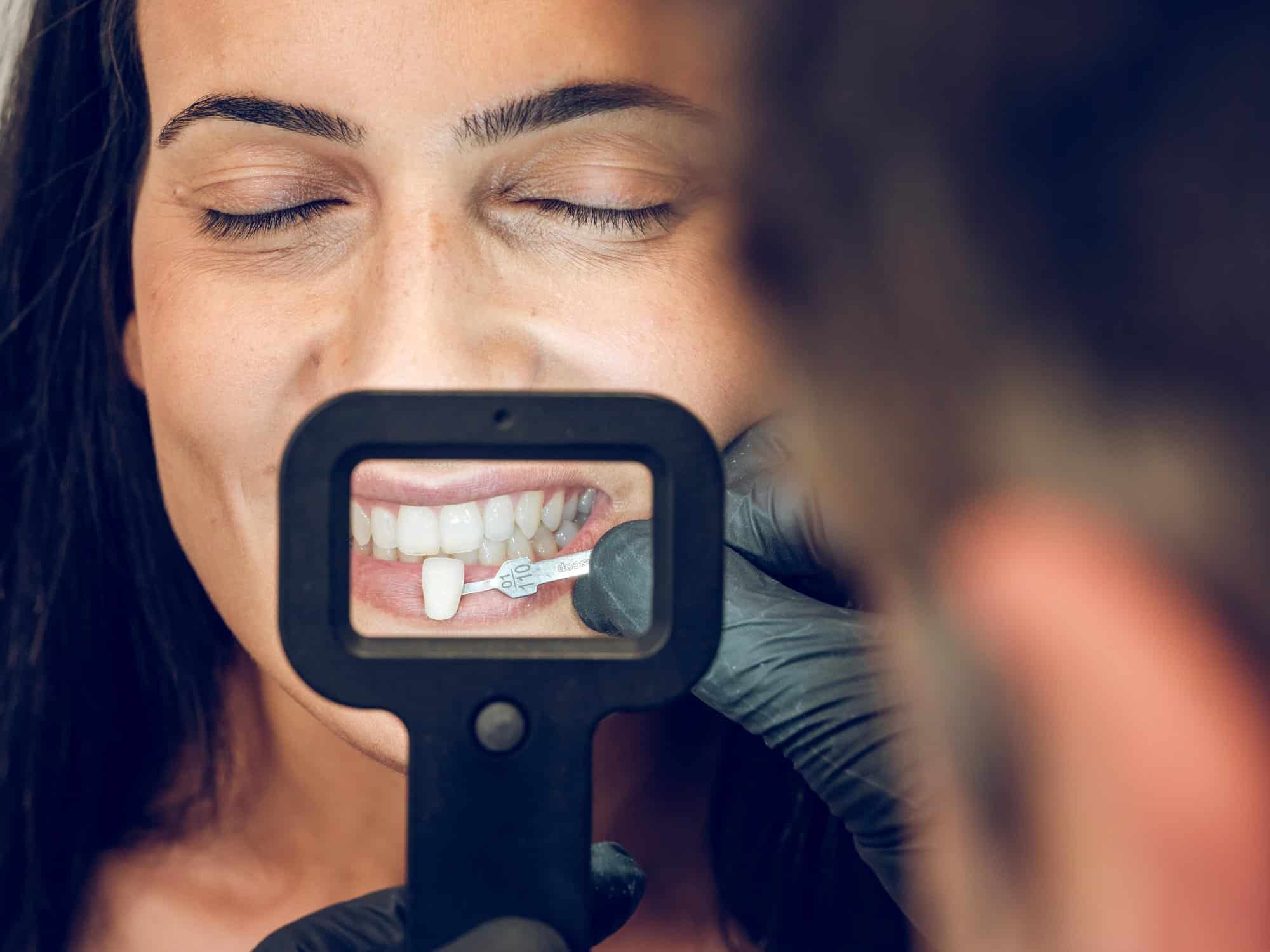
Composite Veneers Vs. Porcelain Veneers: Differences Explained
Modern dentistry has made significant advancements in recent years, and there’s more than one way to give your smile a makeover. Two of the options available are porcelain and composite veneers.
If you’ve been thinking about dental veneers, you most likely have questions about the differences between the two and wonder which one would be the best choice for you.
Below, we will explain the difference between the two main types of veneers to help you decide which is best for your needs and to give you the smile of your dreams.
Composite Veneers
Composite veneers are made from a type of resin by mixing biocompatible plastics with tiny particles of crushed glass.
The two most common types of composite veneers are indirect composite veneers and direct composite veneers.
- Indirect composite veneers are made in a lab using an impression of the patient’s teeth. Once completed, your dentist will attach the composite veneer to your tooth using more composite or dental cement. Your dentist will carefully sculpt your new veneers to achieve your desired results. However, one of the challenges of this type of veneer is that it is difficult to make any last-minute adjustments if you don’t like the shape, color, or size.
- Direct composite veneers are created by carefully building up small layers of composite material to create the desired shape of your tooth. Your dentist will sculpt these veneers onto your teeth, making them easier to adjust until you’re happy with the results. This method also has a downside because it requires spending much time in the dentist’s chair.
Porcelain Veneers
Porcelain veneers are thin layers of porcelain that your dentist will place directly on the front of your tooth. Porcelain veneers fall into three main categories: traditional porcelain veneers, lithium distillate veneers, and zirconium porcelain veneers.
- Traditional porcelain veneers use Western porcelain composed of feldspar, kaolin, and quartz. The material is incredibly similar to the appearance of your natural teeth.
- Zirconia veneers are made with western porcelain, and zirconium is incorporated to improve durability, helping them last 20 years in excellent condition. This material is more translucent than the other two, allowing more dentin to show through.
- Lithium disilicate veneers are made from a mix of ceramic and LS2 lithium disilicate glass and will easily last for at least 30 years.
Comparing Porcelain Veneers and Composite Veneers
Both porcelain and composite veneers are comfortable to wear and can be great options for anyone looking to improve and enhance their smile. Talk to your dentist about veneers and other cosmetic dentistry options to help you have a smile you love.
Advantages and Disadvantages of Composite Veneers
- Composite veneers are more affordable than porcelain ones
- Composite veneers can be applied without sacrificing an extensive amount of tooth enamel
- Direct composite veneers can be installed without any manufacturing time
- Composite veneers last 5 to 7 years
- They are less brittle than porcelain veneers; however, they do not adhere as well to your teeth.
- Composite veneers are more affordable than porcelain veneers
- They don’t last as long as porcelain veneers
- They do not look as attractive or natural as porcelain veneers because the color match is not as accurate, and they do not have the luster of natural teeth as porcelain veneers will
- Composite veneers are more susceptible to acidic foods and beverages and will stain more easily.
- They tend to get more tartar and plaque build up faster than porcelain veneers.
Advantages and Disadvantages of Porcelain Veneers
- Porcelain veneers look incredibly natural, offer beautiful aesthetics, and are durable when properly cared for.
- Porcelain veneers are resistant to staining and are less likely to have tartar and plaque build-up.
- Porcelain veneers last ten years or more and generally stay intact, giving you a bright white smile.
- Porcelain veneers are resistant to acidity in foods and beverages
- They attach to your teeth better than composite veneers
- Porcelain veneers are more fragile than composite veneers
- Your dentist will need to remove a significant amount of tooth mammal to install porcelain veneers
- Your porcelain veneers will need to be created in a lab, which takes several days to complete
- They are more expensive than composite veneers
Choosing Between Composite Veneers and Porcelain Veneers
Now that you know the differences between the two main types of dental veneers, you can decide which is best suited to match your desired results, oral health needs, and budget. Make sure you look at photos of both styles before choosing which treatment is best for you.
Are You Ready To Upgrade Your Smile? Carrie Muzny In The Woodlands Area Can Help!
At Carrie Muzny DDS, we can help you decide and create a personalized treatment plan to rejuvenate and restore your beautiful smile. We offer restorative and preventative dentistry, cosmetic surgery, professional teeth whitening and porcelain veneers, and family dentistry.
Our fantastic team of highly trained dentists will ensure that you and your family are treated with kindness and compassion while utilizing modern dentistry techniques to help you have a smile you love.
We offer exceptional dental care in The Woodland area and will strive to help you achieve optimal oral health to look and feel your best. Contact us today to book an appointment or consultation, and you will leave our office feeling confident about your smile and the care you receive.

